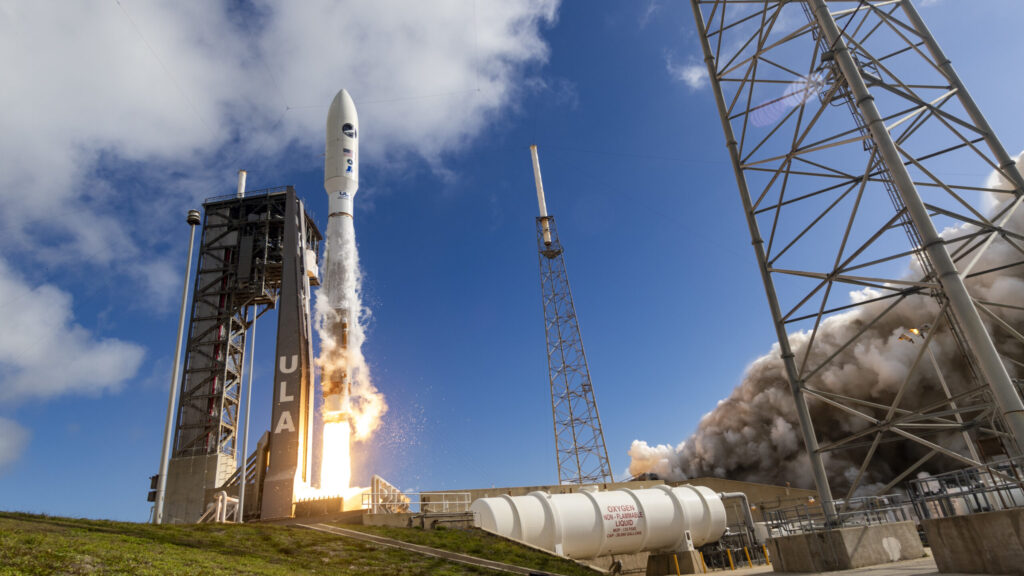
An Atlas V carrying the USSF-7 mission under the National Security Space Launch program lifts off, May 17, 2020. (Photo courtesy of United Launch Alliance)
WASHINGTON: In the event that Congress is unable to pass a defense appropriations bill to cover fiscal 2022 spending, Space Force would see a $2 billion cut to its top line — including an $800 million whack to classified systems designed to respond to adversary attacks, according to Chief of Space Operations Gen. Jay Raymond.
A year-long continuing resolution, which would set the 2022 defense budget at 2021 levels across the board, “would cut $800 million intended for development of classified operational systems designed to deter China or Russia and respond if deterrence fails,” Raymond told the House Appropriations defense subcommittee today — the latter phrase often used as code to suggest offensive space-based capabilities. He added that he could be more specific about those research efforts in a closed session with lawmakers.
“Our adversaries are accelerating. This is not the time to be slowing the development and fielding of modernized capabilities for our forces,” Raymond stressed.
Unclassified details about long list of other potentially impacted programs were included in the written testimony he provided to lawmakers in advance of the hearing.
Perhaps most significantly, the service would have to chop two planned (unspecified) satellite launches under the National Security Space Launch program — reducing the number of launches from a planned five in 2022 to three, according to the testimony. “A yearlong CR would delay these launches by one year, slowing our ability to place previously acquired systems on orbit as well as deferring our ability to realize the benefit and cost-savings of NSSL Phase 2 launch services agreements,” Raymond wrote.
As a CR forbids “new starts,” it would eliminate $37 million in Research, Development, Test, and Engineering (RDT&E) funding “needed to design resilient architectures in multiple mission areas,” including space data transport; missile warning and tracking; communications; and tactical intelligence, surveillance and reconnaissance, the written testimony explained. Another $23 million for the Commercial Satellite Communications (SATCOM) Office would disappear, funds that would allow the service to “update and consolidate” acquisition of commercial satellite communications services.
All together, a CR would result in a shortfall of $700 million in planned RDT&E. This would include $130 million for the Next Generation Overhead Persistent Infrared (Next-Gen OPIR) missile warning satellite program, the testimony noted.
Another big blow would be a 20% shortfall in funds for the Protected Tactical SATCOM program to build jam-resistant satellites, and “new-start restrictions on the Protected Tactical Enterprise System, delaying our ability to provide the warfighter secure wideband communications solutions in contested environments by at least a year,” Raymond wrote.
Major trends and takeaways from the Defense Department’s Unfunded Priority Lists
Mark Cancian and Chris Park of CSIS break down what is in this year’s unfunded priority lists and what they say about the state of the US military.


























